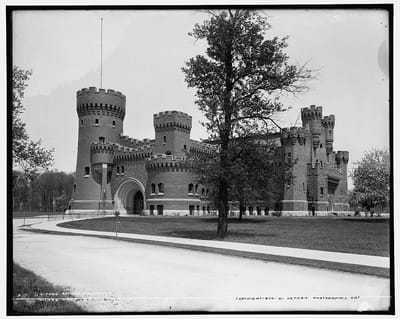About

As a graduate student in the fall of 2002 I heard a professor say war was coming in the Middle East. I disagreed. As a Vietnam vet I thought we wouldn't risk another quagmire, which such a war was likely to produce. The invasion of Iraq seven months later, with almost no public or Congressional objection, made me marvel at how easy it was to use military force. Had it always been so?
Militarism In America is a series of books I have written that tell the history of opposition to expanding and using the nation's armed forces. In peacetime anti-militarists fought against a larger army and navy in the press, in Congress and in cities and towns across America. Questions such as who was the enemy? and, how would they attack us? were asked. We had the strongest navy in the world. Weren't we safe surrounded by oceans and bordered by non-aggressive Mexico and Canada? In peacetime opponents of militarism had their victories. Are there lessons to be learned from this opposition, in our time of the endless war against terrorism?
Volume I of Militarism in America is The Most Militant Blood: Militarism in America, Volume I, 1898-1914. It shows how militarism developed in Americans in the early twentieth century. The recently concluded Spanish-American War had brought the nation and its tiny Army onto the world stage. Now a larger Army was necessary to control the new colonies and play the game of nations. The War Department and the Army set out to encourage the growth of a martial spirit in the American people. The Army was not the only promoter of militarism. Popular short stories and novels portrayed current and future wars as mostly glorious and usually winnable by American soldiers who were braver and more competent than their adversaries. Newspapers and magazines contributed articles about war scares and the suspicious activities of potential enemies. Progressive values and military values fit together. The Progressive Era (1900-1920) was a time when masses of new immigrants and the rise of America as the world's largest economy caused much concern about whether Americans were as patriotic and as loyal as they had been in the past. Progressives wanted reform, but they also feared disorder. What better way to order society than to make sure Americans had the most militant blood in the world?
Volume II 1s Preparing a Great Machine. Militarism in America, Volume II, 1914-1924. It opens with the dramatic events leading up to America’s entry into World War I. The American Union Against Militarism led the fight against preparing to fight in Europe, and continued to oppose large military forces after the war. In 1922 a naval treaty limited great power naval forces, much to the chagrin of the admirals. Anti-militarists opposed an expanded army throughout the 1920’s. Supporters of the military were cheered by the Mobilization Day event in 1924, in which 13 million men participated. Opponents of military expansion were not daunted, however, and their opposition continued. Many people in the past believed that the United States was always unprepared for military action until it was attacked. Preparing a Great Machine shows that this not quite the way it was.
Volume III is New Era, New Deal and War: Militarism in America, Volume III, 1925-1941. Militarism was a live issue before WWII. Accusations of militarism were part of the struggle over the size of America’s armed forces. Anti-militarists claimed that larger forces would tempt our leaders into foreign wars. Expansion of R.O.T.C. was also opposed, as educating young men that might makes right and force is the best argument. This opposition, along with budget constraints, was effective in limiting the size of the United States Army until the mid-nineteen thirties. Anti-militarists had little success in limiting the size of the US Navy. The large navy was seen as defensive in nature and thus not the danger to peace that a large army might be. Before December 7, 1941, a charge of militarism often provoked an answer. This led to discussions about what was actually needed for national defense. Such discussions are no longer held, but this book demonstrates they were possible and could have effect.
I can be persistent and am working on Cold War Militarism: Militarism in America, Volume IV, 1945-1955
Please have a look at the blog, where I have some historic photos and some from today. Your comments are welcome.


